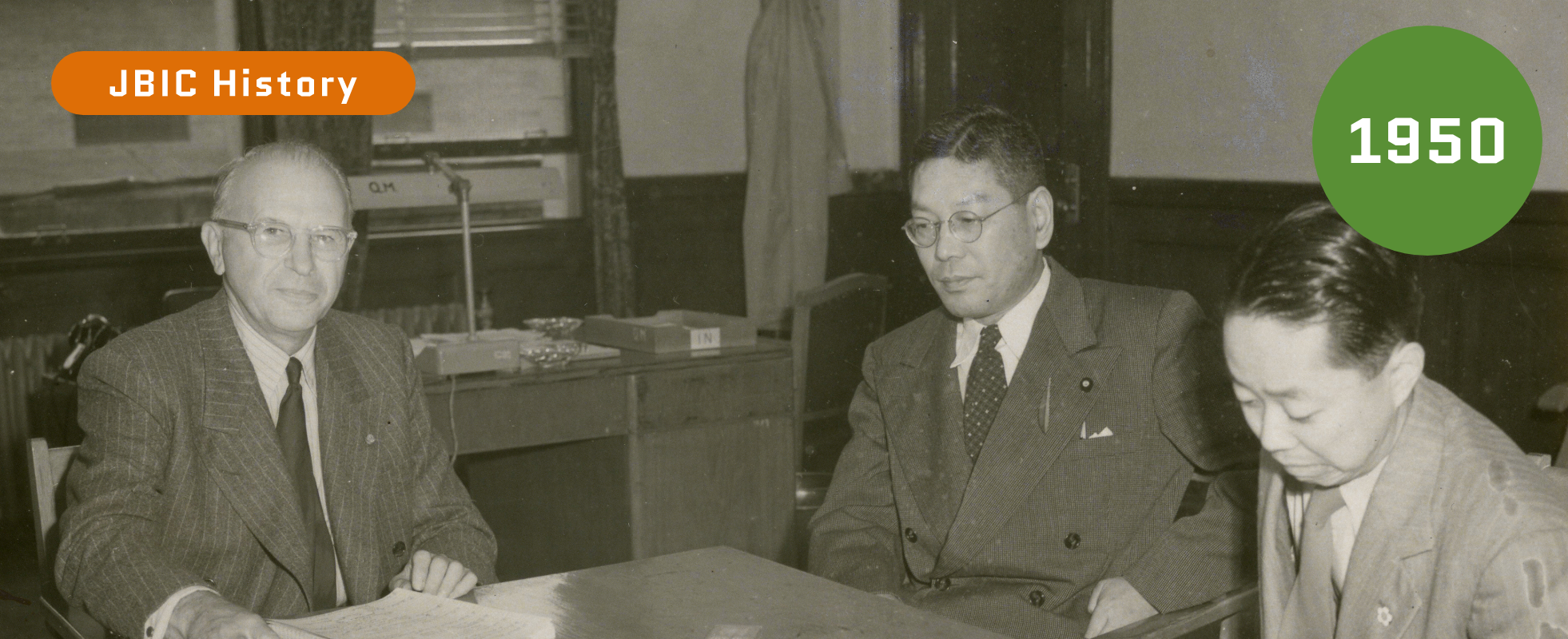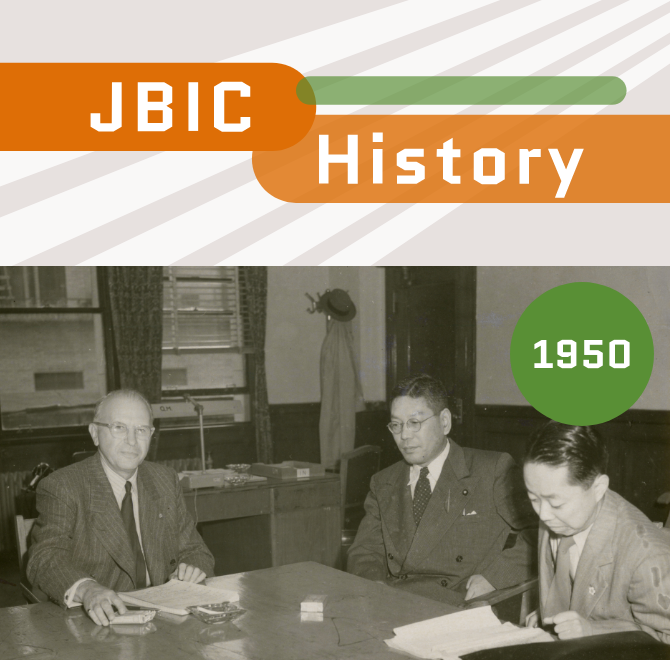JBIC History vol.1
The origins of JBIC date back to 1950, part of the history of Japan’s postwar foreign monetary policy. This new series of articles will look back at the history of JBIC, one year at a time.


Discussions between Joseph Dodge (left), a key figure in the establishment of the Export Bank, and IKEDA Hayato, Minister of Finance (middle), 1951 © The Asahi Shimbun / amanaimages
Once postwar inflation had settled down, Japan hit on the idea of establishing an Export Bank
Five years after the end of World War II, the Japan Export Bank was established in December 1950; the forerunner of JBIC. The idea of establishing an Export Bank began with a meeting between Finance Minister IKEDA Hayato and U.S. monetary policy advisor Joseph Dodge in May of the same year.
Immediately after the war defeat, all goods were scarce in Japan, and people’s lives were poor. However, GHQ (occupying authorities) severely restricted trade, forbidding imports other than items necessary to maintain a minimum standard of living. Eventually, the U.S. occupation policy toward Japan changed, in part because of the growing belief that stronger economies in Asia and Europe would stop the spread of communism.
In March 1947, the “Japan Economic Promotion Plan” was formulated, which stated that in order to revive the Japanese economy, it was first necessary for the country to import sufficient food and raw materials, and use those raw materials to manufacture goods for export. In other words, it was believed that exports could be a catalyst for reconstruction.
At the time, Japan was experiencing severe inflation, and in 1949 Dodge implemented a balanced budget called the Dodge Line. Inflation was successfully brought under control, but then dissatisfaction with deflation began to rise in Japan. So, in May 1950, Prime Minister YOSHIDA Shigeru ordered Finance Minister IKEDA to visit Washington, D.C., where he met with Dodge. He proposed the idea of establishing an Export Bank.
It was initially established as Japan Export Bank with no import financing permitted
Finance Minister IKEDA was looking for a way to promote exports to ease deflation, while Dodge hoped that boosting export financing from Japan would lead to economic recovery in other Asian countries. But things were not that simple. GHQ, which had been sidelined by this meeting between IKEDA and Dodge, objected. GHQ was displeased that Finance Minister IKEDA had consulted directly with Dodge instead of GHQ, which was supposed to be the official channel.
In October, Dodge arrived in Japan as an advisor to General MacArthur, the head of GHQ, and the idea was realized in the form of the “Outline for Establishing the Export Finance Bank.” Fierce bargaining then took place over the next two months until the Export Bank Bill was passed in December. While Finance Minister IKEDA had initially pushed for the Export-Import Bank proposal, Dodge did not approve of import financing until the end. He argued strongly that imports are the same as domestic consumption, which Japan should curb and use those resources for exports.
The Export Bank was initially limited to financing the export of equipment and technologies, but then the Korean War broke out, and Japan found itself in the midst of a procurement demand boom. In April 1952, the scope of operations was expanded to include import financing needed for the development and import of natural resources, and the name was changed to the Export-Import Bank of Japan. Japan had taken a strong step toward economic recovery as a trading nation.








